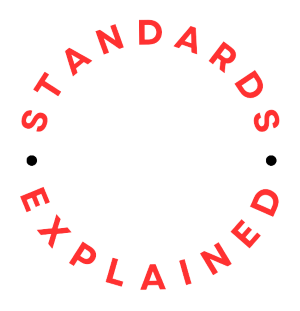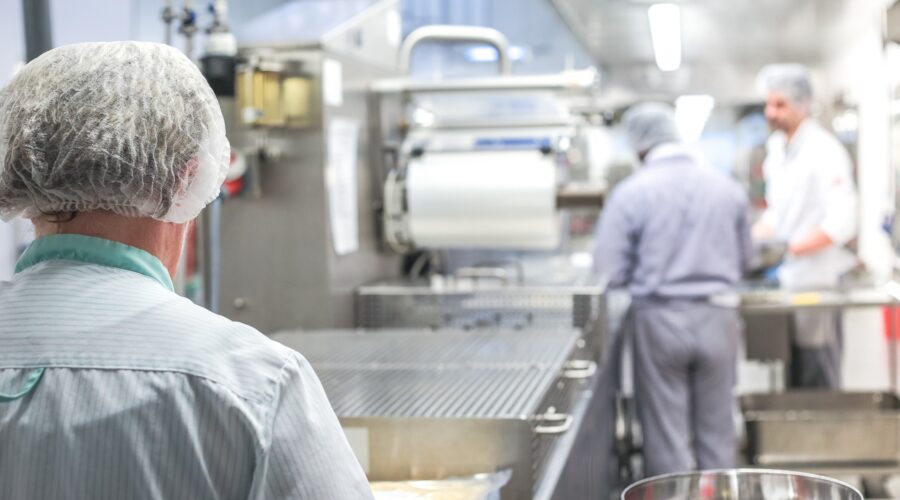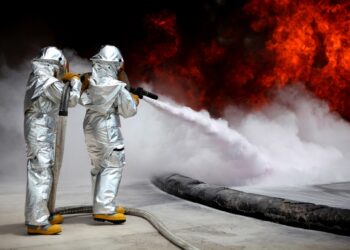ISO 22000:2018 Food safety management systems — Requirements for any organization in the food chain is an international standard that provides guidelines and requirements for food safety management. It specifies requirements for a food safety management system (FSMS) to enable an organization that is directly or indirectly involved in the food chain:
- plan, implement, operate, maintain and update a FSMS providing products and services that are safe, in accordance with their intended use;
- demonstrate compliance with applicable statutory and regulatory food safety requirements;
- evaluate and assess mutually agreed customer food safety requirements and to demonstrate conformity with them;
- effectively communicate food safety issues to interested parties within the food chain;
- ensure that the organization conforms to its stated food safety policy;
- demonstrate conformity to relevant interested parties;
- seek certification or registration of its FSMS by an external organization, or make a self-assessment or self-declaration of conformity to the standard.
All requirements of this document are generic and are intended to be applicable to all organizations in the food chain, regardless of size and complexity. Organizations that are directly or indirectly involved include, but are not limited to:
- feed producers, animal food producers, harvesters of wild plants and animals, farmers, producers of ingredients;
- food manufacturers, retailers, and organizations providing food services, catering services, cleaning and sanitation services, transportation, storage and distribution services; and
- suppliers of equipment, cleaning and disinfectants, packaging materials, and other food contact materials.
Note that the standard was last reviewed and confirmed in 2023; therefore, this version remains current.
What does it cover?
| Introduction |
| 1 Scope |
| 2 Normative references |
| 3 Terms and definitions |
| 4 Context of the organization |
| 4.1 Understanding the organization and its context |
| 4.2 Understanding the needs and expectations of interested parties |
| 4.3 Determining the scope of the food safety management system |
| 4.4 Food safety management system |
| 5 Leadership |
| 5.1 Leadership and commitment |
| 5.2 Policy |
| 5.3 Organizational roles, responsibilities and authorities |
| 6 Planning |
| 6.1 Actions to address risks and opportunities |
| 6.2 Objectives of the food safety management system and planning to achieve them |
| 6.3 Planning of changes |
| 7 Support |
| 7.1 Resources |
| 7.2 Competence |
| 7.3 Awareness |
| 7.4 Communication |
| 7.5 Documented information |
| 8 Operation |
| 8.1 Operational planning and control |
| 8.2 Prerequisite programmes (PRPs) |
| 8.3 Traceability system |
| 8.4 Emergency preparedness and response |
| 8.5 Hazard control |
| 8.6 Updating the information specifying the PRPs and the hazard control plan |
| 8.7 Control of monitoring and measuring |
| 8.8 Verification related to PRPs and the hazard control plan |
| 8.9 Control of product and process nonconformities |
| 9 Performance evaluation |
| 9.1 Monitoring, measurement, analysis and evaluation |
| 9.2 Internal audit |
| 9.3 Management review |
| 10 Improvement |
| 10.1 Nonconformity and corrective action |
| 10.2 Continual improvement |
| 10.3 Update of the food safety management system |
| Annex A Cross references between the CODEX HACCP and this document |
| Annex B Cross references between this document and ISO 22000:2005 |
What are the steps for implementing ISO 22000?
Implementing a Food Safety Management System (FSMS) in conformity with ISO 22000 involves establishing a structured approach to ensure the safety of food products throughout the entire food supply chain.
Leadership and Commitment
- Gain commitment from top management to implement and support the FSMS in conformity with ISO 22000.
- Appoint a Food Safety Manager or Coordinator to lead the implementation efforts.
Scope Determination
Determine the scope of the FSMS, including the food processes, products, and locations that will be covered by ISO 22000 compliance.
Food Safety Policy
- Develop a food safety policy that reflects the organization’s commitment to food safety and conformity with ISO 22000.
- Ensure the policy is communicated throughout the organization.
Hazard Analysis
- Conduct a hazard analysis to identify potential biological, chemical, and physical hazards in your food processes.
- Assess the severity and likelihood of these hazards.
Determining Critical Control Points (CCPs)
Identify critical control points in your processes where controls are essential to prevent, eliminate, or reduce identified hazards to acceptable levels.
Setting Critical Limits
Establish critical limits for each CCP to ensure the control measures are effective.
Monitoring and Control Measures
- Develop monitoring procedures for each CCP to ensure that critical limits are consistently met.
- Implement control measures and procedures to manage identified hazards.
Prerequisite Programs (PRPs)
Develop and implement prerequisite programs, such as hygiene, sanitation, and supplier control, to maintain a safe food environment.
Documentation and Record Keeping
Create and maintain documentation required by ISO 22000, including food safety manuals, procedures, work instructions, and records.
Training and Awareness
- Provide food safety training to employees, contractors, and suppliers.
- Raise awareness about food safety requirements and the organization’s policy.
Communication and Stakeholder Engagement
- Establish effective communication channels with suppliers, customers, and other stakeholders regarding food safety matters.
- Engage stakeholders in food safety decision-making and reporting.
Emergency Preparedness and Response
- Develop and implement procedures for responding to food safety emergencies.
- Conduct drills and exercises to ensure preparedness.
Verification and Validation
- Conduct regular verification activities, including internal audits and reviews, to assess conformity with ISO 22000 requirements.
- Validate control measures to ensure they are effective in controlling identified hazards.
Food Safety Review and Performance Evaluation
- Conduct regular reviews and performance evaluations of the FSMS.
- Assess its effectiveness and identify areas for improvement.
Management Review
- Hold periodic management reviews to evaluate the performance of the FSMS.
- Identify areas for improvement.
Continual Improvement
- Foster a culture of continual improvement by encouraging employees to suggest and implement enhancements to food safety practices.
- Use the Plan-Do-Check-Act (PDCA) cycle for continual improvement.
External Audit and Certification
Engage with a certification body to perform an external audit to assess the FSMS’s conformity with the ISO 22000 standard.
Certification and Maintenance
- After successfully passing the certification audit, your organization will be granted ISO 22000 certification.
- Maintain and continually improve the FSMS to ensure ongoing conformity.
A few, final words…
It is essential to recognize that conformity with ISO 22000 is an ongoing process. Organizations should continually monitor and measure their food safety performance, adapt to changing food safety risks and regulations, and actively promote a culture of food safety and quality. Regularly review and update your FSMS policies, objectives, and procedures to ensure they remain relevant and effective.
ISO 22000 can be purchased through the ISO.org website.














Comments (0)